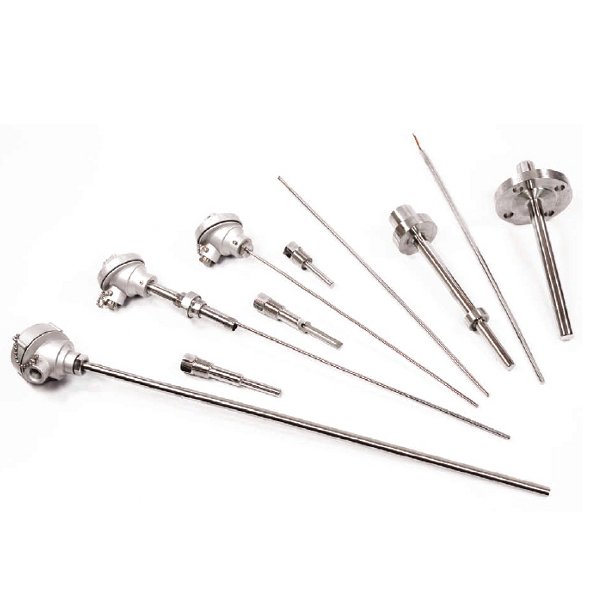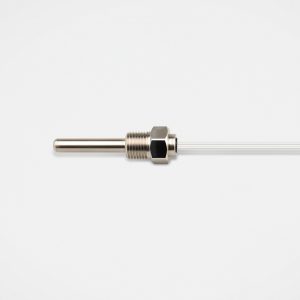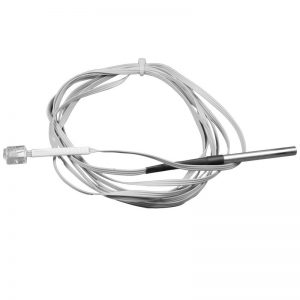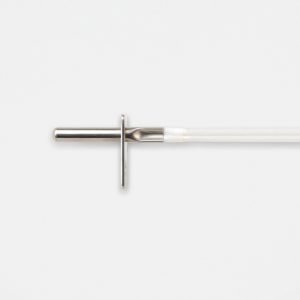Description
What is a Thermocouple?
A Thermocouple is a sensor used to measure temperature. Thermocouples consist of two wire legs made from different metals. The wires legs are welded together at one end, creating a junction. This junction is where the temperature is measured. When the junction experiences a change in temperature, a voltage is created.
There are many types of thermocouples, each with its own unique characteristics in terms of temperature range, durability, vibration resistance, chemical resistance, and application compatibility. Type J, K, T, & E are “Base Metal” thermocouples, the most common types of thermocouples.Type R, S, and B thermocouples are “Noble Metal” thermocouples, which are used in high temperature applications (see thermocouple temperature ranges for details).
Thermocouples are used in many industrial, scientific, and OEM applications. They can be found in nearly all industrial markets: Power Generation, Oil/Gas, Pharmaceutical, BioTech, Cement, Paper & Pulp, etc. Thermocouples are also used in everyday appliances like stoves, furnaces, and toasters.
Thermocouples are typically selected because of their low cost, high temperature limits, wide temperature ranges, and durable nature.
Types of Thermocouples:
Before discussing the various types of thermocouples, it should be noted that a thermocouple is often enclosed in a protective sheath to isolate it from the local atmosphere. This protective sheath drastically reduces the effects of corrosion.
Type K Thermocouple (Nickel-Chromium / Nickel-Alumel):
The type K is the most common type of thermocouple. It’s inexpensive, accurate, reliable, and has a wide temperature range.
Temperature Range:
- Thermocouple grade wire, –454 to 2,300°F (–270 to 1260°C)
- Extension wire, 32 to 392°F (0 to 200°C)
Accuracy (whichever is greater):
- Standard: +/- 2.2°C or +/- .75%
- Special Limits of Error: +/- 1.1°C or 0.4%
Type J Thermocouple (Iron/Constantan):
The type J is also very common. It has a smaller temperature range and a shorter lifespan at higher temperatures than the Type K. It is equivalent to the Type K in terms of expense and reliability.
Temperature Range:
- Thermocouple grade wire, -346 to 1,400°F (-210 to 760°C)
- Extension wire, 32 to 392°F (0 to 200°C)
Accuracy (whichever is greater):
- Standard: +/- 2.2°C or +/- .75%
- Special Limits of Error: +/- 1.1°C or 0.4%
Type T Thermocouple (Copper/Constantan):
The Type T is a very stable thermocouple and is often used in extremely low temperature applications such as cryogenics or ultra low freezers.
Temperature Range:
- Thermocouple grade wire, -454 to 700°F (-270 to 370°C)
- Extension wire, 32 to 392°F (0 to 200°C)
Accuracy (whichever is greater):
- Standard: +/- 1.0°C or +/- .75%
- Special Limits of Error: +/- 0.5°C or 0.4%
Type E Thermocouple (Nickel-Chromium/Constantan):
The Type E has a stronger signal & higher accuracy than the Type K or Type J at moderate temperature ranges of 1,000F and lower. See temperature chart (linked) for details.
Temperature Range:
- Thermocouple grade wire, -454 to 1600°F (-270 to 870°C)
- Extension wire, 32 to 392°F (0 to 200°C)
Accuracy (whichever is greater):
- Standard: +/- 1.7°C or +/- 0.5%
- Special Limits of Error: +/- 1.0°C or 0.4%
Type N Thermocouple (Nicrosil / Nisil):
The Type N shares the same accuracy and temperature limits as the Type K. The type N is slightly more expensive.
Temperature Range:
- Thermocouple grade wire, -454 to 2300°F (-270 to 392°C)
- Extension wire, 32 to 392°F (0 to 200°C)
Accuracy (whichever is greater):
- Standard: +/- 2.2°C or +/- .75%
- Special Limits of Error: +/- 1.1°C or 0.4%
NOBLE METAL THERMOCOUPLES (Type S,R, & B):
Noble Metal Thermocouples are selected for their ability to withstand extremely high temperatures while maintaining their accuracy and lifespan. They are considerably more expensive than Base Metal Thermocouples.
Type S Thermocouple (Platinum Rhodium – 10% / Platinum):
The Type S is used in very high temperature applications. It is commonly found in the BioTech and Pharmaceutical industries. It is sometimes used in lower temperature applications because of its high accuracy and stability.
Temperature Range:
- Thermocouple grade wire, -58 to 2700°F (-50 to 1480°C)
- Extension wire, 32 to 392°F (0 to 200°C)
Accuracy (whichever is greater):
- Standard: +/- 1.5°C or +/- .25%
- Special Limits of Error: +/- 0.6°C or 0.1%
Type R Thermocouple (Platinum Rhodium -13% / Platinum):
The Type R is used in very high temperature applications. It has a higher percentage of Rhodium than the Type S, which makes it more expensive. The Type R is very similar to the Type S in terms of performance. It is sometimes used in lower temperature applications because of its high accuracy and stability.
Temperature Range:
- Thermocouple grade wire, -58 to 2700°F (-50 to 1480°C)
- Extension wire, 32 to 392°F (0 to 200°C)
Accuracy (whichever is greater):
- Standard: +/- 1.5°C or +/- .25%
- Special Limits of Error: +/- 0.6°C or 0.1%
Type B Thermocouple (Platinum Rhodium – 30% / Platinum Rhodium – 6%):
The Type B thermocouple is used in extremely high temperature applications. It has the highest temperature limit of all of the thermocouples listed above. It maintains a high level of accuracy and stability at very high temperatures.
Temperature Range:
- Thermocouple grade wire, 32 to 3100°F (0 to 1700°C)
- Extension wire, 32 to 212°F (0 to 100°C)
Accuracy (whichever is greater):
- Standard: +/- 0.5%
- Special Limits of Error: +/- 0.25%




